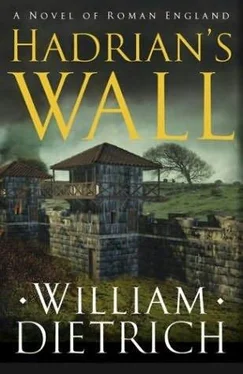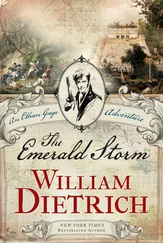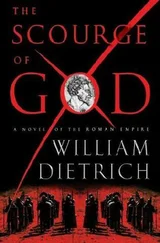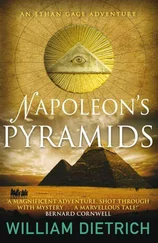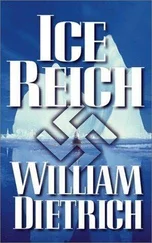William Dietrich - Hadrian's wall
Здесь есть возможность читать онлайн «William Dietrich - Hadrian's wall» весь текст электронной книги совершенно бесплатно (целиком полную версию без сокращений). В некоторых случаях можно слушать аудио, скачать через торрент в формате fb2 и присутствует краткое содержание. Жанр: Исторические приключения, на английском языке. Описание произведения, (предисловие) а так же отзывы посетителей доступны на портале библиотеки ЛибКат.
- Название:Hadrian's wall
- Автор:
- Жанр:
- Год:неизвестен
- ISBN:нет данных
- Рейтинг книги:4 / 5. Голосов: 1
-
Избранное:Добавить в избранное
- Отзывы:
-
Ваша оценка:
- 80
- 1
- 2
- 3
- 4
- 5
Hadrian's wall: краткое содержание, описание и аннотация
Предлагаем к чтению аннотацию, описание, краткое содержание или предисловие (зависит от того, что написал сам автор книги «Hadrian's wall»). Если вы не нашли необходимую информацию о книге — напишите в комментариях, мы постараемся отыскать её.
Hadrian's wall — читать онлайн бесплатно полную книгу (весь текст) целиком
Ниже представлен текст книги, разбитый по страницам. Система сохранения места последней прочитанной страницы, позволяет с удобством читать онлайн бесплатно книгу «Hadrian's wall», без необходимости каждый раз заново искать на чём Вы остановились. Поставьте закладку, и сможете в любой момент перейти на страницу, на которой закончили чтение.
Интервал:
Закладка:
None of the characters in this novel are based on real people, except for brief mention of such high-ranking figures as the emperor Hadrian and his governors, the emperor Valentinian, Duke (or Dux, in Roman usage) Fullofaudes at Eburacum (or modern-day York), and Theodosius, the Roman general who landed reinforcements and eventually drove the a.d. 367 uprising back. So is Valeria a probable figure? Would we even find Roman women at so remote a place as Hadrian's Wall?
The answer is certainly yes. A remarkable find of writing scraps in a Roman dump at the military fortress of Vindolanda, about midway along Hadrian's Wall, includes letters between military wives of commanding officers stationed at nearby forts. Also found have been children's shoes in the vicinity of the commander's residence, and we know commanders were allowed to live with their families during their standard three-year tour of duty. Julia Lucilla was a senator's daughter married to a commanding officer at High Rochester. And while Rome was in general a patriarchal society based on military power, with wives legally subordinate to their husbands, upper-class women received some education, generally led comfortable lives, and sometimes wielded considerable political influence through their mates.
While soldiers below the rank of centurion were not allowed officially to marry until after an edict of a.d. 197-a change made to combat lagging recruitment-even before that time there is documentary evidence of legionaries being accompanied by unofficially recognized "wives." There were also brothels, of course, and male-female relationships were undoubtedly as complicated then as they are now. Any reading of surviving Roman correspondence suggests that while technology has changed greatly in the past two millennia, human nature has not changed at all.
Though movies and books have given us a mental picture of the Roman Empire at its height, Rome's incredibly long history means that artistic and archaeological records represent a few surviving snapshots of a long scrapbook that has been mostly lost. The period from the legendary founding of Rome to the city's sack by Alaric in a.d. 410 is an astounding 1,163 years. We can add another thousand years for the persistence of the Byzantine successor to Rome's eastern empire. Simply the time span between the assassination of Julius Caesar and the events in this book is 411 years, or longer than the period between the founding of the English colony at Jamestown, Virginia, and the present day. While technological and social change was incredibly slow by modern standards, change nonetheless took place, and the Rome of Hadrian's Wall was different from the Rome of such films as Cleopatra, Spartacus, or Gladiator. The widespread adoption of more flexible chain mail and the mobility of the horse anticipated the dress and armor of the early Middle Ages, far from the classic Roman soldier we are so familiar with. The horse gave the Roman army the mobility to meet fast-moving barbarian raiding parties, and the height of a horse meant that the short stabbing gladius sword was gradually eclipsed by longer slashing swords, eventually evolving from the cavalry spatha of Galba to Excalibur-type weapons. Exactly when and how these transitions took place is unclear. Our mental picture is blurry because ancient literary and archaeological sources decline sharply after about a.d. 200. The late 300s present an author with both a paucity of detail and considerable room for novelistic imagination. The next few centuries in Britain-the probable time of King Arthur, if he really existed-are even foggier.
We do know that Hadrian's Wall provided a three-centuries-long solution to a vexing military and technological problem that Rome continually struggled with: defending an empire 3,000 miles long and 1,750 miles wide. Despite the superb construction of 48,500 miles of Roman roads, transportation in ancient times was extremely difficult. At the time of Valeria's journey, the stirrup had not been invented, horseshoes were mostly unknown, wagons had no suspension to even out bumps, and "horsepower"-horses, mules, donkeys, and oxen-had to be fed. The practical limit of economical land transport away from water was about seventy-five miles, which helps explain why the empire was oriented around the Mediterranean and why major new cities grew up along such waterways as the Danube, the Rhine, the Seine, and the Thames. Yet the empire's land area was the size of the United States. Hadrian's revolutionary solution was to halt the expansion that his predecessors had pushed and establish a defensible boundary. In Britain it was Hadrian's Wall, in Germany it was a log palisade two hundred miles long between the Danube and Rhine, and in North Africa and Arabia it was a series of forts in trackless desert. Where possible, the Romans used rivers, canyons, and ridges to make their stopping point as defensible as possible. A precipitous gorge near the headwaters of the Middle East's Euphrates River was one such barrier.
Still, the Roman army, even with as many as 300,000 men, never had sufficient numbers to firmly guard such lengthy boundaries. As time went on, the Romans were increasingly forced to recruit the barbarians they had conquered into their army to sustain its numbers. These new warriors brought new methods, such as heavy cavalry and long swords, with them. While border fortifications provided bases and a fixed boundary, it was relatively easy for a determined barbarian horde to pierce Rome's long line. The solution was infantry that could march quickly on Roman roads to crisis points, or cavalry that could run raiders to ground. The analogy between the Petriana and the U.S. cavalry that patrolled the American West is obvious. Hadrian's Wall was not just a fixed fortification but a base for patrol.
While Petrianis may have been a real fort, I have moved it in my imagination from its likely flatland location near modern-day Carlisle (Uxello durum), where cavalry would have been most effective, to a more evocative but fictional setting of hill and river: a place that borrows from the geography of the Roman fort at today's Birdoswald, called Banna by the Romans, and that near Corbridge, called Onnum. Arden's fort of Tiranen is not based on any specific Celtic hill fort, but its design is typical of those found across Britain, and its described terrain is typical of the increasingly rugged Scottish countryside north of Hadrian's Wall.
The Scotti, incidentally, came-at the time of this story-from the isle that the Celts called Eiru and the Romans called Hibernia: modern-day Ireland. It was later that they gave their name to Scotland as part of that back-and-forth tide of conquest that ultimately made Great Britain the product of Celt, Viking, German, French, Irish, and Roman invaders, a melting pot of sword and blood. Thus a distant and ancient empire, Rome, helped seed a much later and even bigger one. Though Hadrian's Wall did not last forever, both the political boundaries it set and the elusive dream it represented- of permanent security, behind some kind of impregnable defense-remain with us to this day.
Интервал:
Закладка:
Похожие книги на «Hadrian's wall»
Представляем Вашему вниманию похожие книги на «Hadrian's wall» списком для выбора. Мы отобрали схожую по названию и смыслу литературу в надежде предоставить читателям больше вариантов отыскать новые, интересные, ещё непрочитанные произведения.
Обсуждение, отзывы о книге «Hadrian's wall» и просто собственные мнения читателей. Оставьте ваши комментарии, напишите, что Вы думаете о произведении, его смысле или главных героях. Укажите что конкретно понравилось, а что нет, и почему Вы так считаете.
